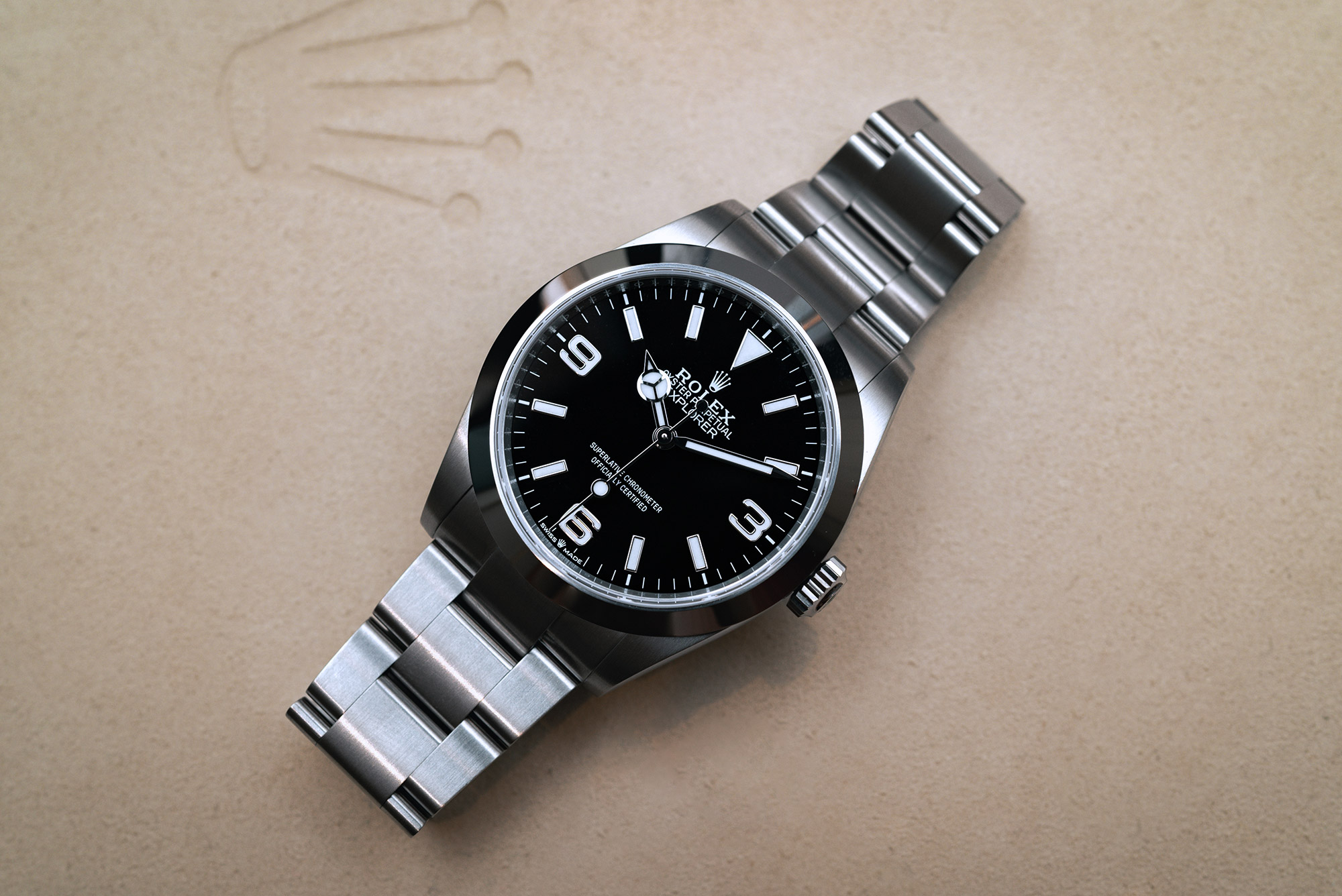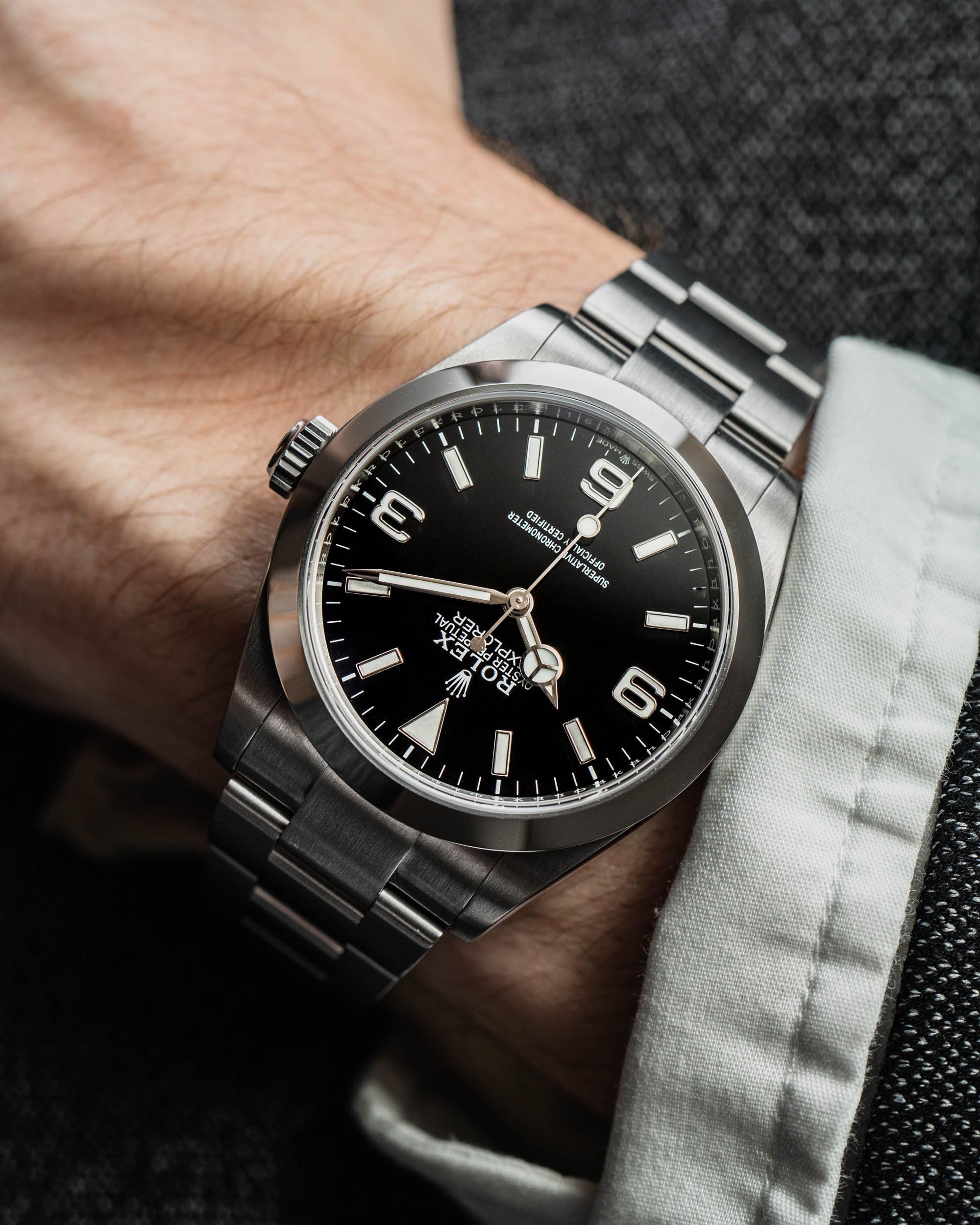
Two years ago, when the Rolex Explorer returned to its classic 36mm case size, the previous 39mm model, which had been in production since 2010, was discontinued altogether. While many collectors were thrilled to see the change, there were others who felt that the new 36mm model was a bit too small, especially compared to the other models in the brand’s current catalog. Consequently, when the Rolex Explorer 40 reference 224270 was announced earlier this year at Watches & Wonders Geneva 2023, the addition of a larger Explorer model made a lot of sense, and while the new 40mm version is very much the larger version of the existing 36mm reference, that is also exactly the intended purpose of this new oversized Explorer watch.
Before we get into the details of the design and case sizing, it’s worth briefly discussing the remarkable design constraints of the classic stainless steel Rolex Explorer. For starters, the model is defined by its signature time-only dial with prominent 3-6-9 Arabic numeral markers, which has only ever been black (unless you count the mega-rare “Albino” vintage models). Additionally, with a simple round case, a smooth bezel, and a flat three-link Oyster bracelet, there isn’t all that much that Rolex can do to the Explorer from a design standpoint without fundamentally altering one of its most famous and recognizable models.
Therefore, ever since the Explorer first appeared in 1953, Rolex has essentially been making the same watch over and over again, and with each new generation, the brand is simply trying to make it better than the previous one. That said, the fact that Rolex is now offering the new 40mm version of the Explorer ref. 224270 alongside the 36mm ref. 124270 is significant because it is the only Rolex sports model, other than the Yacht-Master, that is available in more than one case size. Only within the world of Rolex is a new size of an existing model considered big news, although it still represents one of the most significant updates to the Explorer collection in the seventy years that it has been in continuous production.
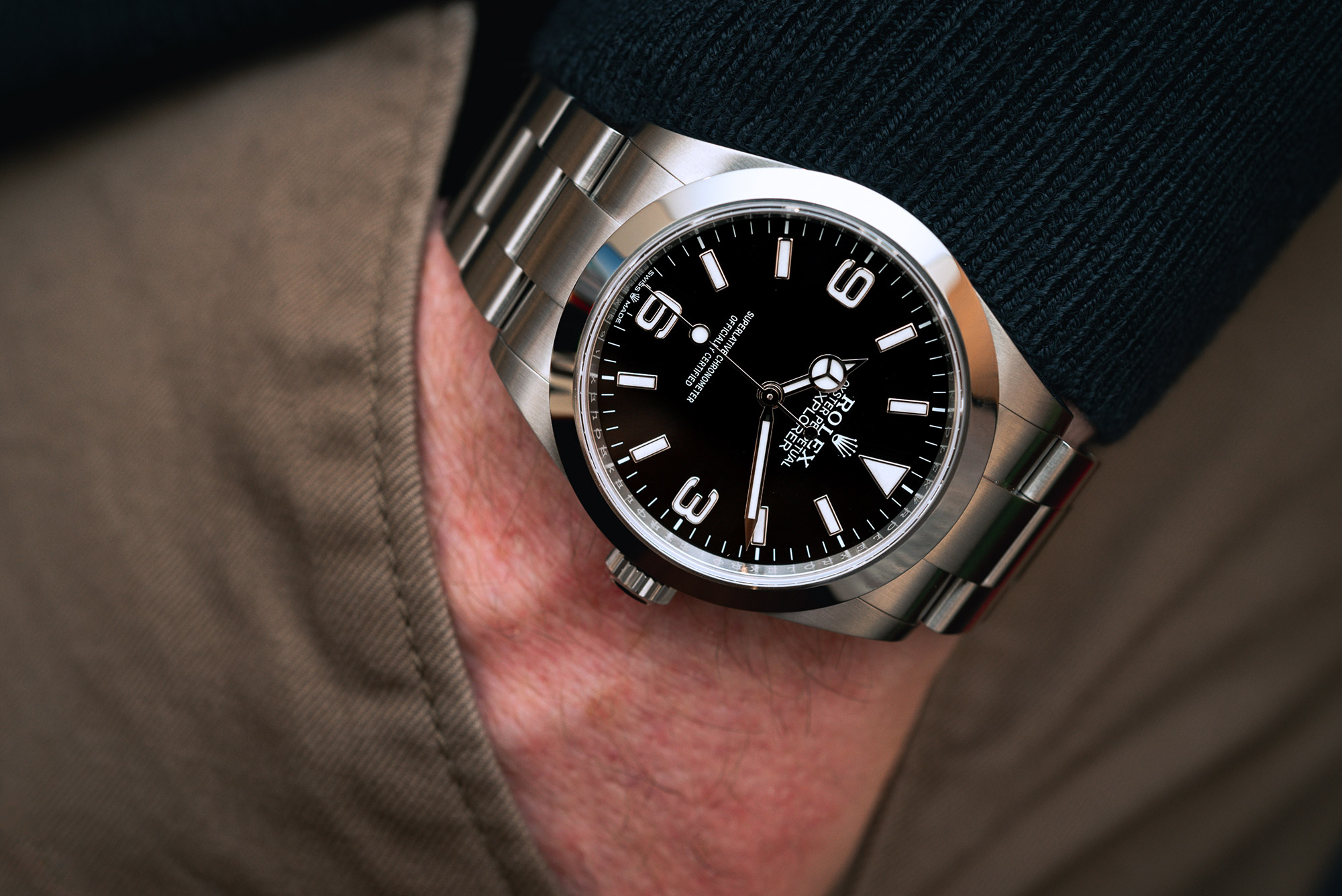
Part of why the current Rolex Explorer 36 feels small is because the watch actually is slightly smaller than previous 36mm Explorer references. Aside from the fact that the case measures closer to 35.5mm, previous versions of the 36mm Rolex Explorer had their lugs set 20mm apart, while the current model reduces this distance down to 19mm. The smaller lug width means a more dramatic taper on the lugs themselves, which results in a further visual reduction in overall size. On top of that, since the bracelet is also thinner, the entire watch simply takes up less surface area on your wrist, and if you were wondering why the current Explorer 36 feels smaller than the Datejust 36 or Oyster Perpetual 36, it is simply because the watch actually is smaller than its similarly sized 36mm siblings.
As someone with small wrists, I personally enjoy the current Rolex Explorer 36 quite a bit, but even I must admit that it is near the lower size limit for the standard version of this particular watch. For anyone with significantly larger wrists than mine, I can completely understand the sentiment that the current 36mm Explorer is a bit too small. With slightly more refined proportions than the previous 39mm generation, the new Rolex Explorer 40 reference 224270 doesn’t feel all that much larger than its plus-sized predecessor, and it is the perfect option for anyone who loves the current Explorer 36, but simply wishes that it was a little bit bigger.
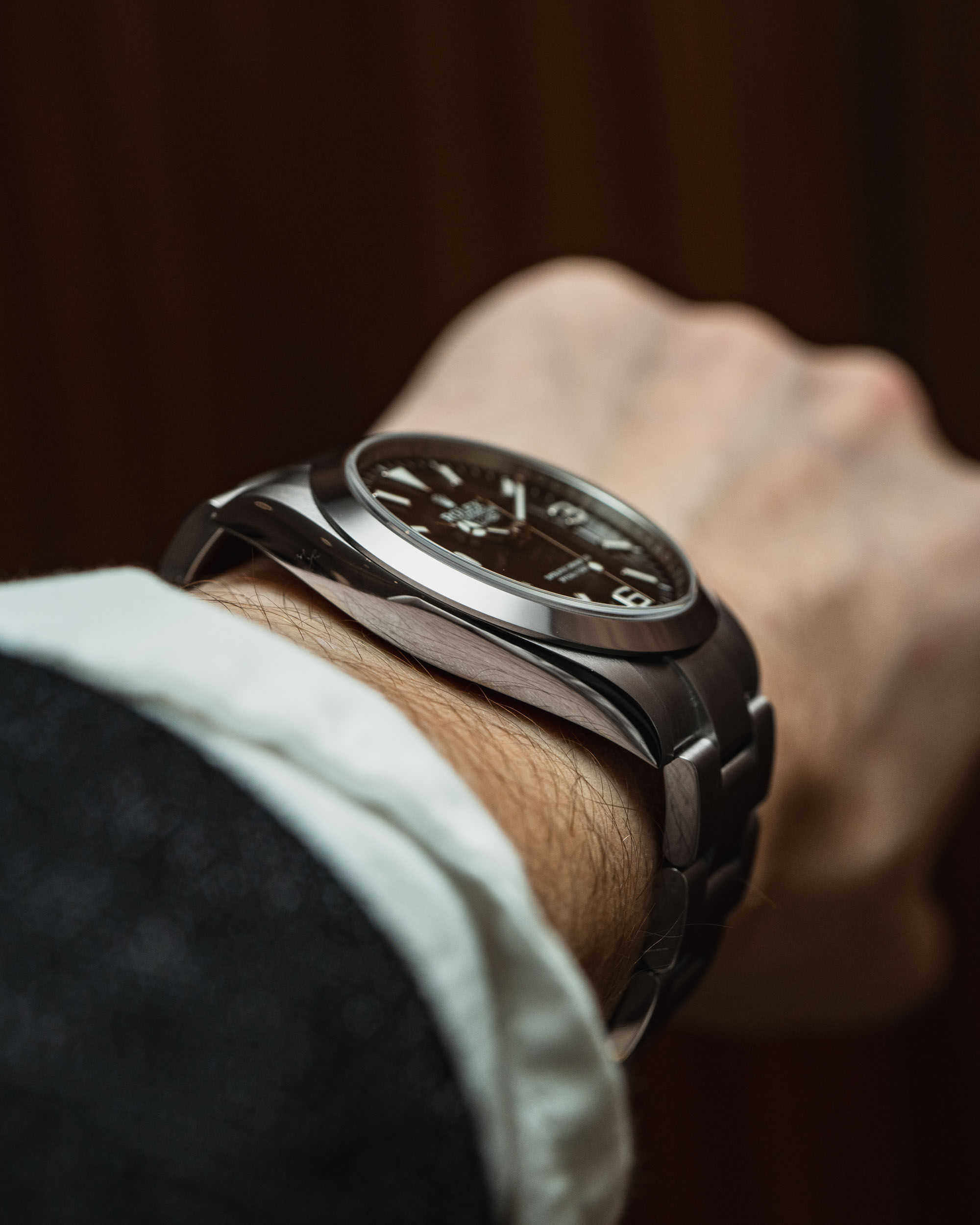
Crafted from Oystersteel (Rolex’s name for its own blend of 904L stainless steel), the case of the new Rolex Explorer 40 reference 224270 measures 40mm in diameter by 11.6mm thick, which makes it the same height as its 36mm sibling. However, the larger diameter of the new 40mm version contributes to the watch feeling slightly flatter once you have it in your hands and try it on your wrist. The rest of the Explorer 40 holds no real surprises or departures from the current 36mm model, and a flat sapphire crystal with anti-reflective treatment sits above the dial, while a solid, unadorned screw-down caseback closes up the reverse side of the watch. Similarly, like all previous Explorer references from the last several decades, at the 3 o’clock location, you will find a Rolex Twinlock winding crown, which has also seen an increase in size to match the larger case diameter, and it screws down to help ensure the model’s 100 meters of water resistance.
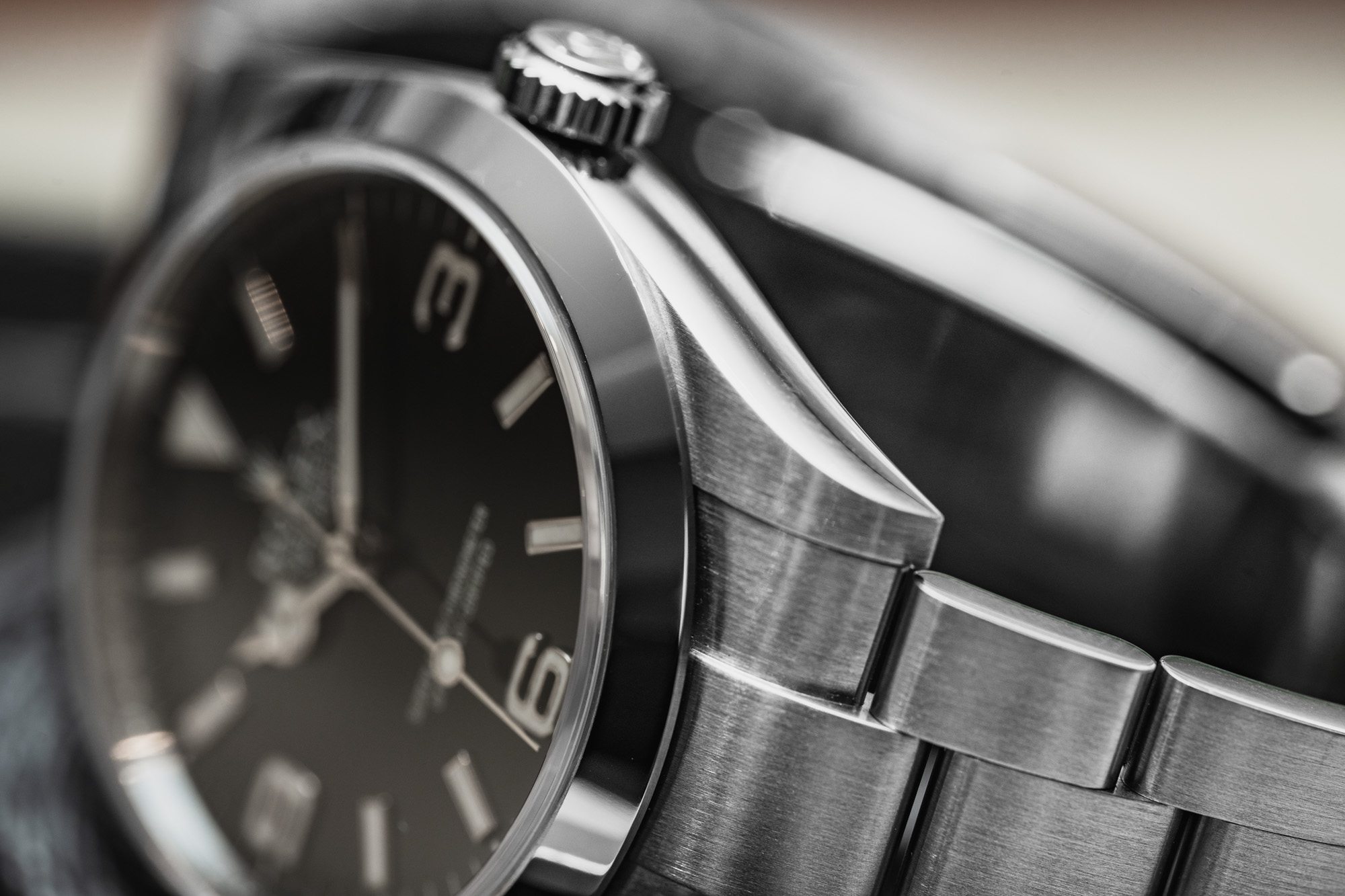
Finishing on the new Rolex Explorer 40 reference 224270 is as you would expect from Rolex: exceptionally good and tidy, but nothing so mind-blowing or elaborate that it deserves special mention — and that is perfectly acceptable as far as I’m concerned. Yes, Rolex is a luxury brand, but it’s also important to remember that Rolex produces over a million watches each year, and the Explorer 40 is one of its entry-level sports models. Calling Rolex watches mass-produced feels like it belittles the enormous amount of research and engineering that goes into them, although the statement itself isn’t entirely inaccurate. They might be some of the most perfectly executed mass-produced items on this planet, but Rolex is the single most famous luxury brand in the world, and its watches, although truly excellent, are an entirely different animal compared to the small-batch handmade offerings that are produced by other brands.
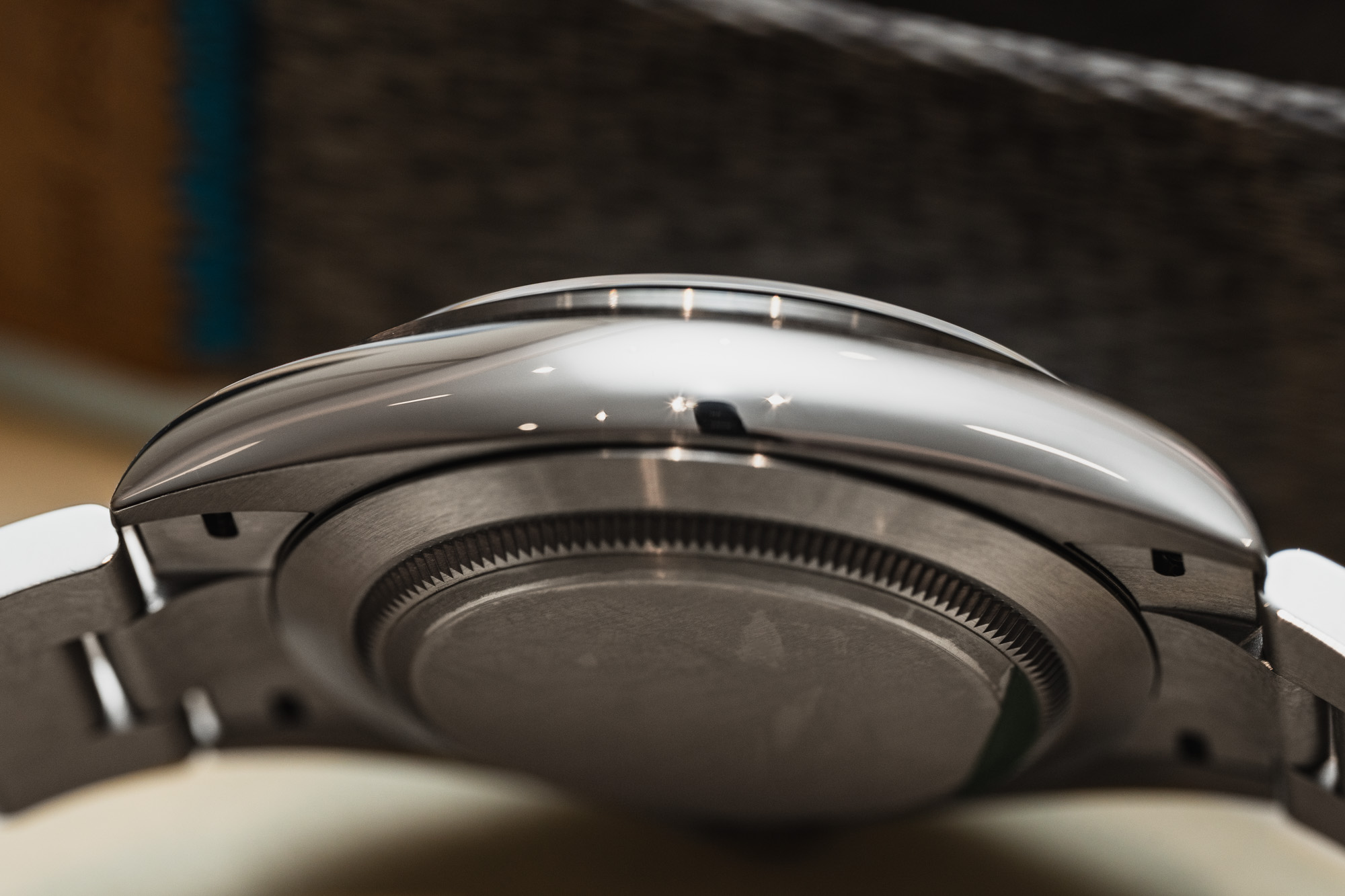
For those who don’t have experience with Rolex’s current generation of models, one quick note should be made about the bezel of the new Rolex Explorer 40 reference 224270, or rather the area of its case that sits directly under the bezel. On previous generations of Rolex watches, the side of the case stuck out to the outer rim of the bezel to create a flat vertical wall (like most watches). However, the fixed bezel models from Rolex’s current lineup now have their cases milled out so that the bezel hangs over the side of the case at the area between the lugs. Consequently, the end links of the bracelet now feature protrusions that slot into the milled-out sides of the case, and this small redesign comes with two benefits and one potential drawback. On the positive side, the end links are now much better supported, which will mean less long-term wear on the sides of the case and a longer life for the bracelet itself. Additionally, since the bezel sticks out past the edge of the end links, the bracelet offers a more integrated overall appearance, and this is about as “integrated” as it gets, while still retaining a traditional bracelet that can be removed and swapped out for a compatible third-party strap.
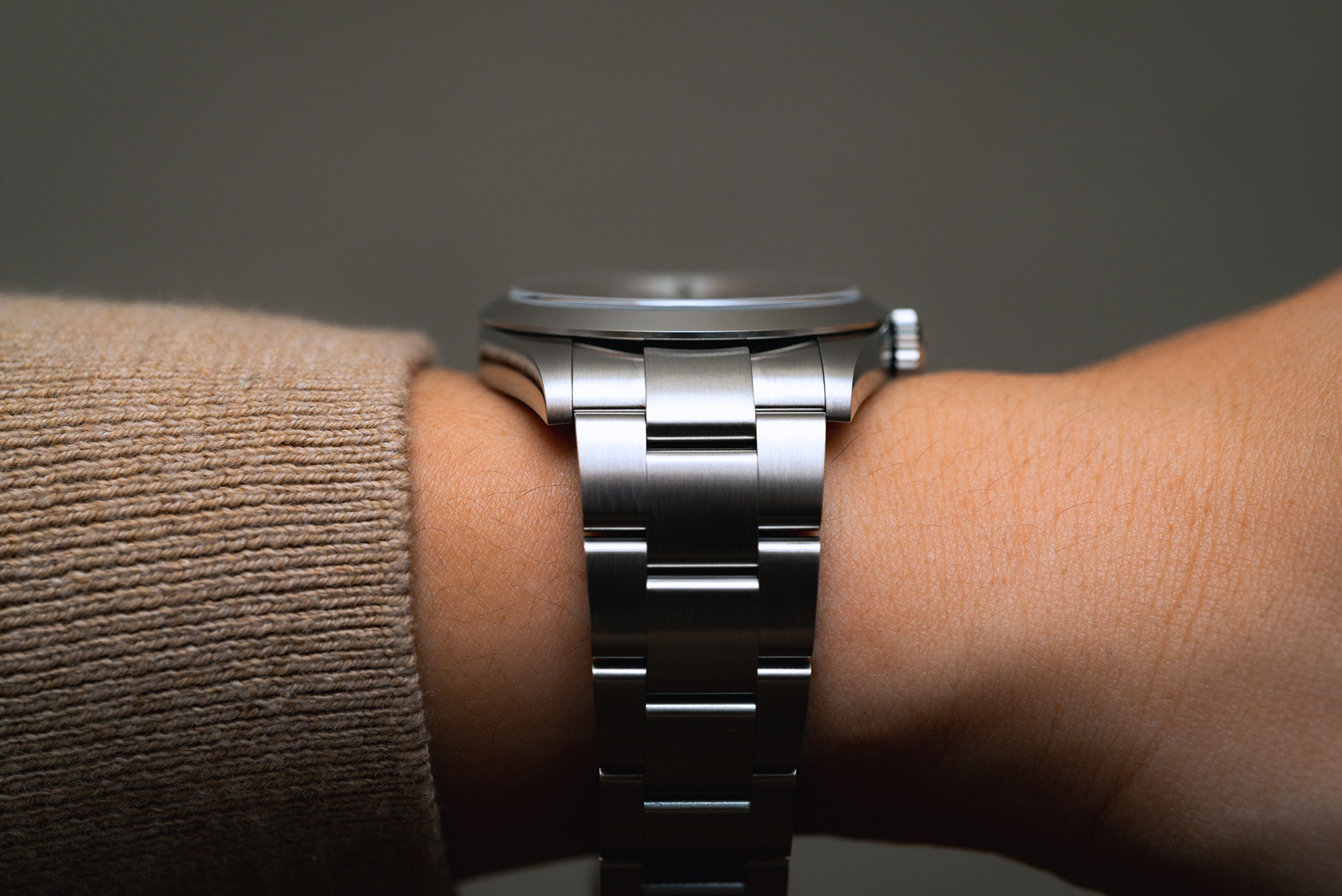
The only potential drawback with this bezel/case design is that if you do choose to fit the new Rolex Explorer 40 reference 224270 with a standard aftermarket strap, the cut-away sections for the end links will be left open on the sides of the case. While these gaps will be partially obscured by the ends of the strap and the bezel, these spaces will likely become a collection point for dirt and grime unless the strap has ends that are specifically molded to the shape of the Explorer 40’s case. To complement its larger diameter, the lugs of the new 40mm Explorer 224270 are set 21mm apart, and while this does slightly limit the number of available strap options (compared to either 20mm or 22mm), this is the same lug width that you will find on many of Rolex’s other current-production models, such as the Submariner and Datejust 41.
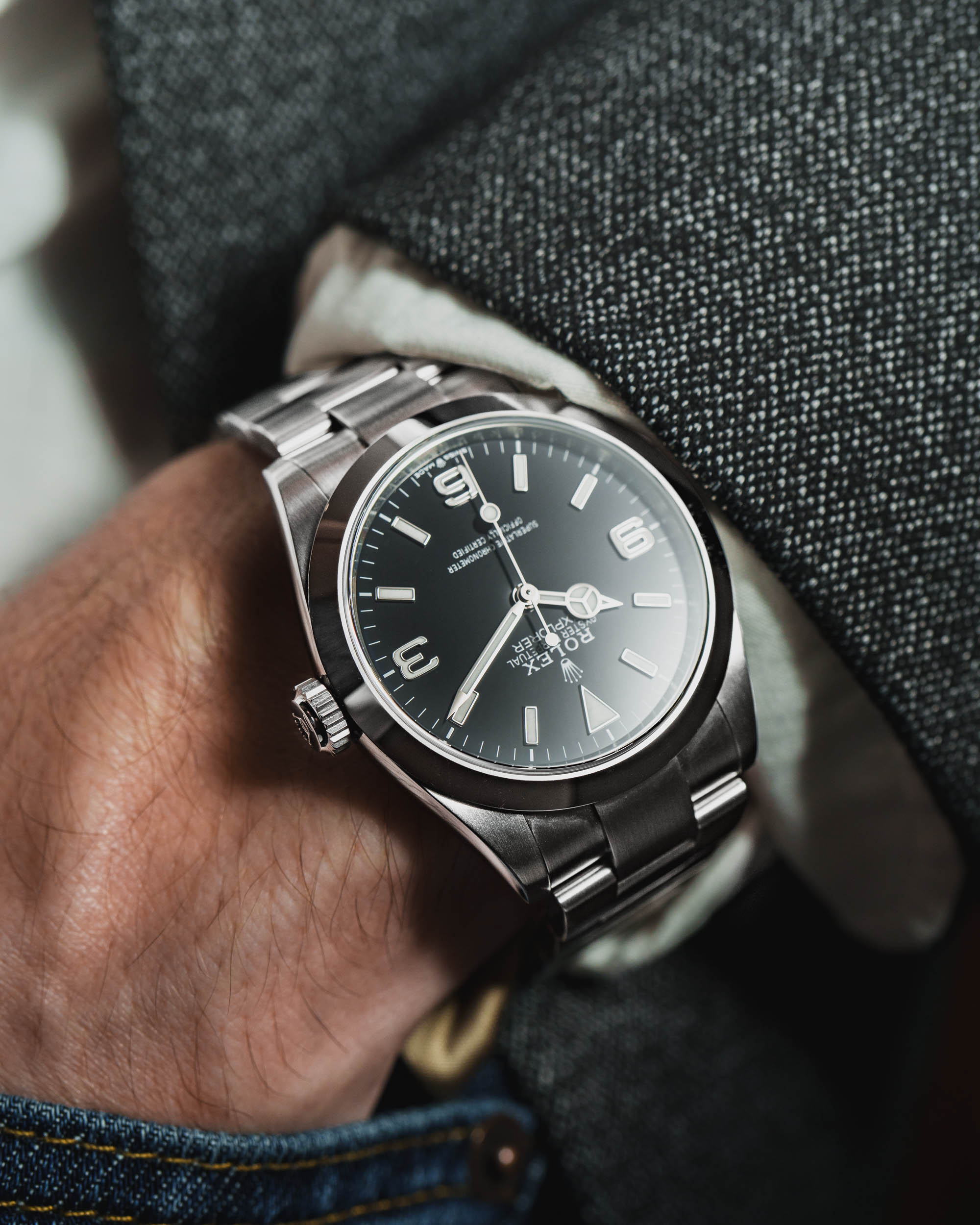
The dial of the new Rolex Explorer 40 reference 224270 is very much just a larger version of what you will find on the current-production 36mm model, which itself is essentially the latest refinement of a style that Rolex has been using since the 1950s. Set against a jet-black surface are applied hour markers crafted from 18k white gold in the Explorer’s signature 3-6-9 layout, and as you would expect, all twelve of the indexes are filled with Rolex’s blue-glowing Chromalight luminescent material. The entirety of the printing appears in white for maximum contrast, and unlike the previous 39mm model, the “Swiss Made” signature below the 6 o’clock marker features Rolex’s coronet insignia placed between the two words. Similarly, the hands appear in the model’s signature “Mercedes” style, and like the hour markers, they are crafted from 18k white gold and filled with blue-glowing Chromalight.
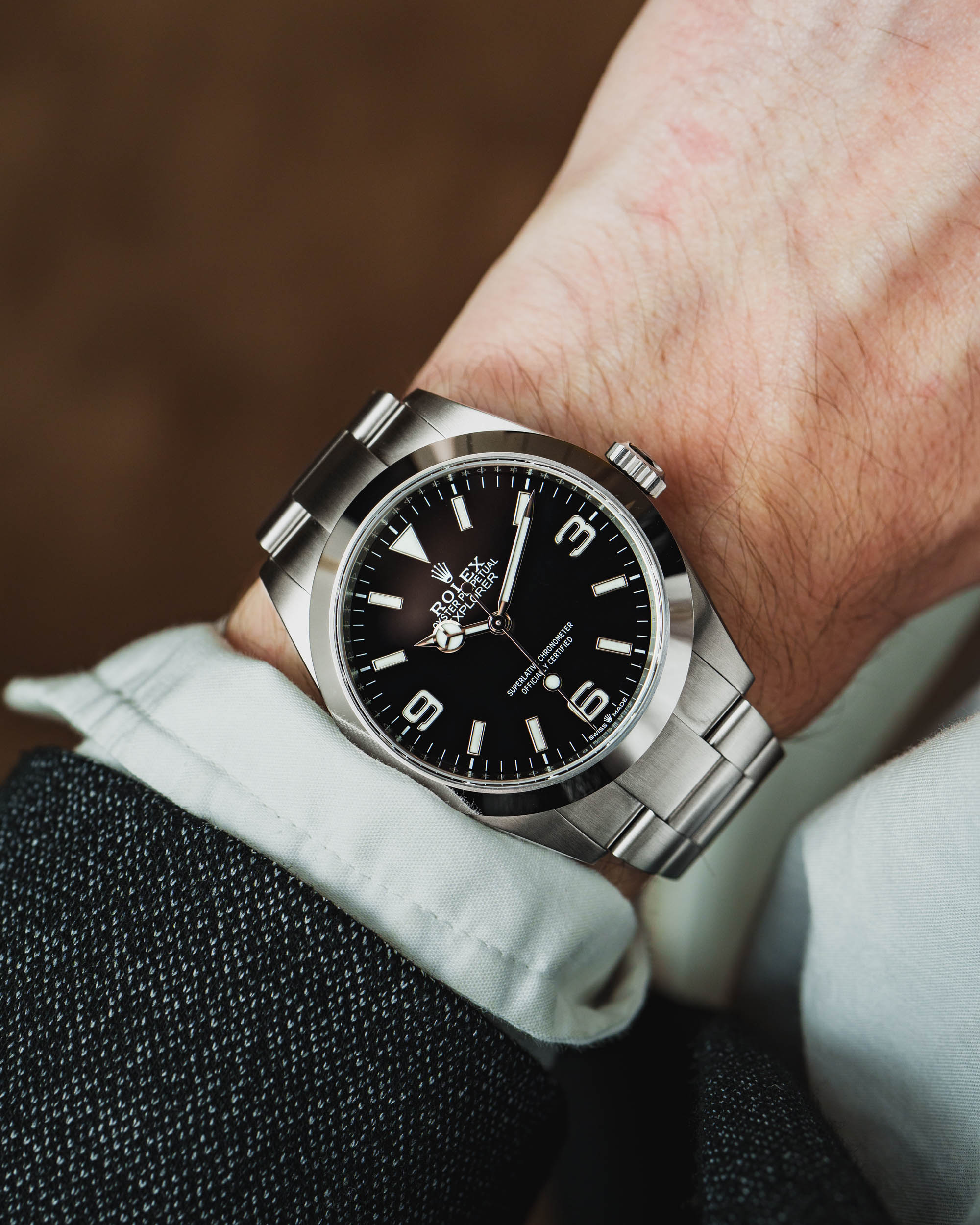
Internally, the new Rolex Explorer 40 reference 224270 is powered by the same Caliber 3230 automatic movement that can be found inside the smaller 36mm model from the current collection. As the no-date version of the brand’s standard three-handed movement, the Rolex Cal. 3230 is a “Superlative Chronometer” rated to -2/+2 seconds per day (after casing), and it runs at a frequency of 28,800vph (4 Hz) while offering users a power reserve of approximately 70 hours. As with all of the other movements from this latest generation, the Cal. 3230 features the brand’s blue Parachrom hairspring, Paraflex shock absorbers, and a bearing-mounted monobloc rotor that offers bidirectional winding via a set of reversing wheels. Given that the Caliber 3230 is essentially the no-date version of the Caliber 3235, which Rolex trusts to power a number of incredibly popular models such as the Datejust and Submariner, the movement offers a relatively proven design, along with an extended power reserve compared to the previous generation.
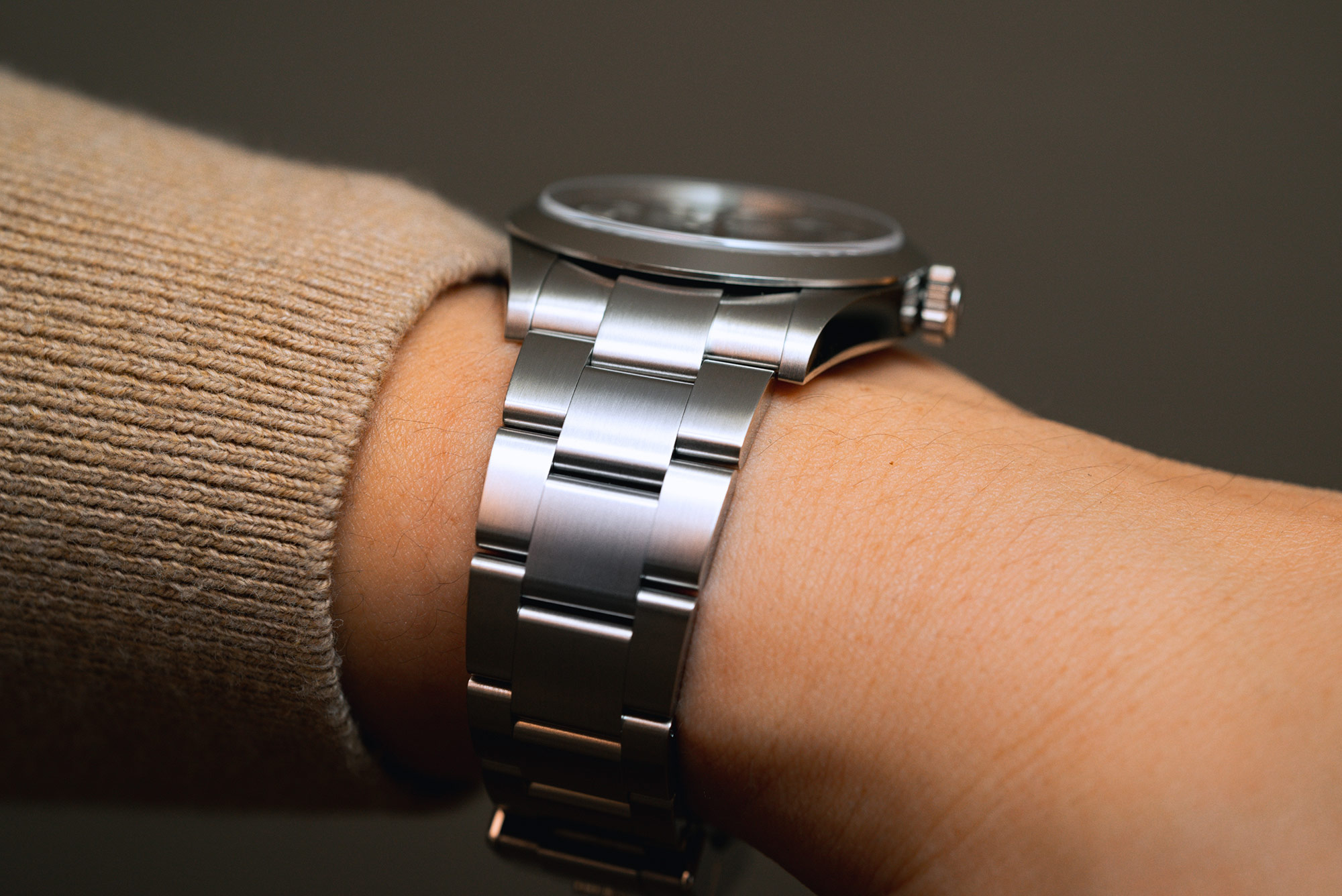
Fitted to the 21mm lugs of the new Rolex Explorer 40 reference 224270 is the current generation of Rolex’s signature Oyster bracelet. Often imitated, but never quite replicated to the same level of execution, the flat three-link design of the Oyster bracelet is arguably the single most common bracelet style within the entire watch industry, and it is the go-to option for the vast majority of Rolex’s sports models. Crafted from Oystersteel to match the case, the bracelet features completely brushed top surfaces with high-polished sides, and it is paired with the brand’s Oysterlock clasp that features an additional safety latch that folds over the top section. Although you don’t get the Glidelock extension system that can be found on other models, such as the Submariner or Sea-Dweller, the Explorer 40’s clasp does include Rolex’s Easylink extension system, which is a fold-out link that allows users to instantaneously either expand or contract the length of the bracelet by 5mm without the use of any tools.
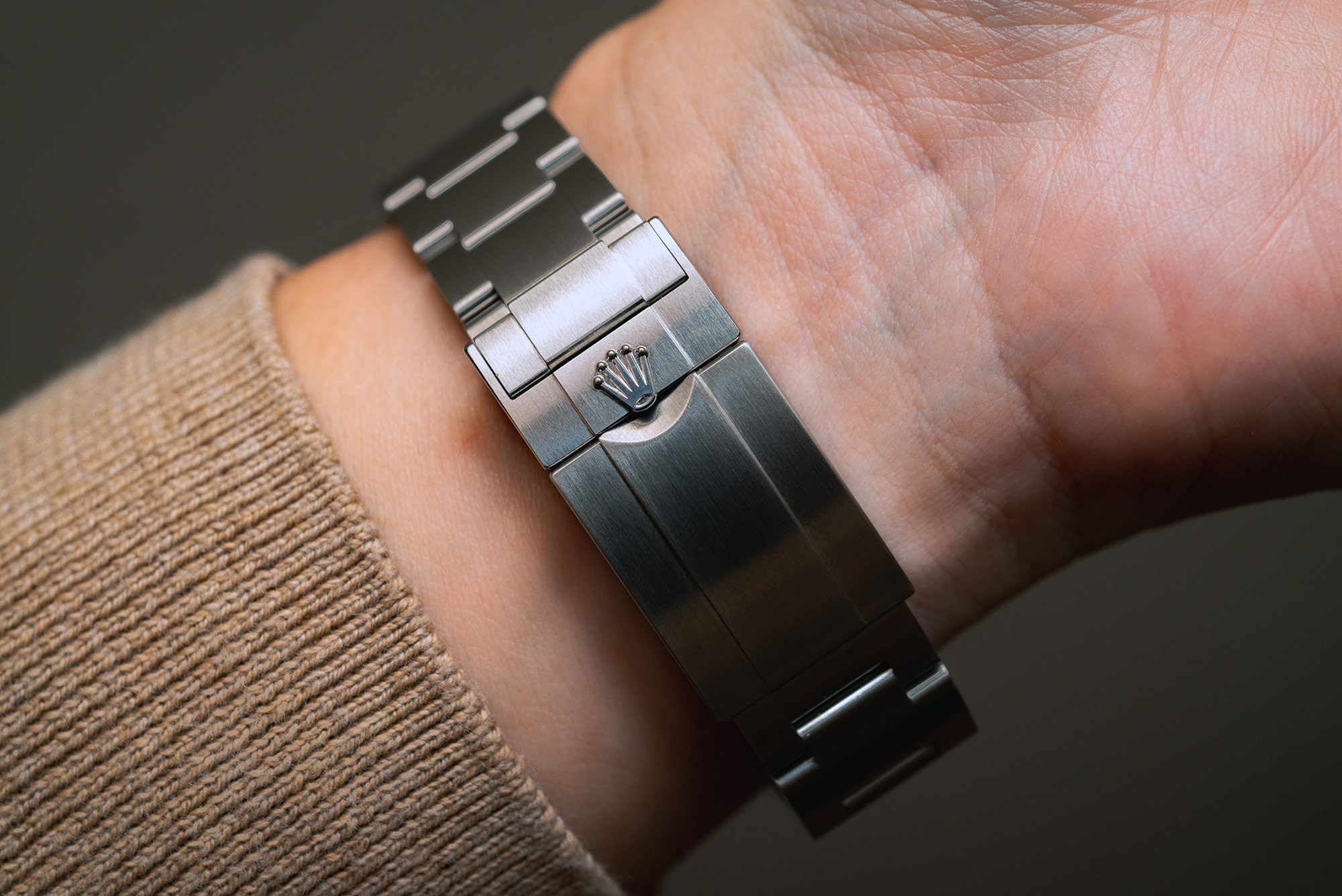
The new Rolex Explorer 40 fills a much-requested place in Rolex’s catalog, and the addition of this new larger model represents a significant milestone for the Explorer collection, as it is now only one of two instances where Rolex offers one of its sports watches with multiple case sizes. That said, like virtually all Rolex models, the Explorer 40 is quite a bit more expensive than what Rolex was charging for its direct predecessors a handful of years ago. Across the board, Rolex has made significant increases to its retail prices over the past several years, but due to the massive secondary market premiums that accompany most models, the higher retail prices still seem fairly reasonable by comparison. Simply put, if people are faced with a 50% premium on the secondary market, it’s fairly easy for them to overlook a 20% price increase at a retail level, especially if they aren’t able to secure an allocation and would be forced to pay the open market price for the Rolex model of their choice anyway.
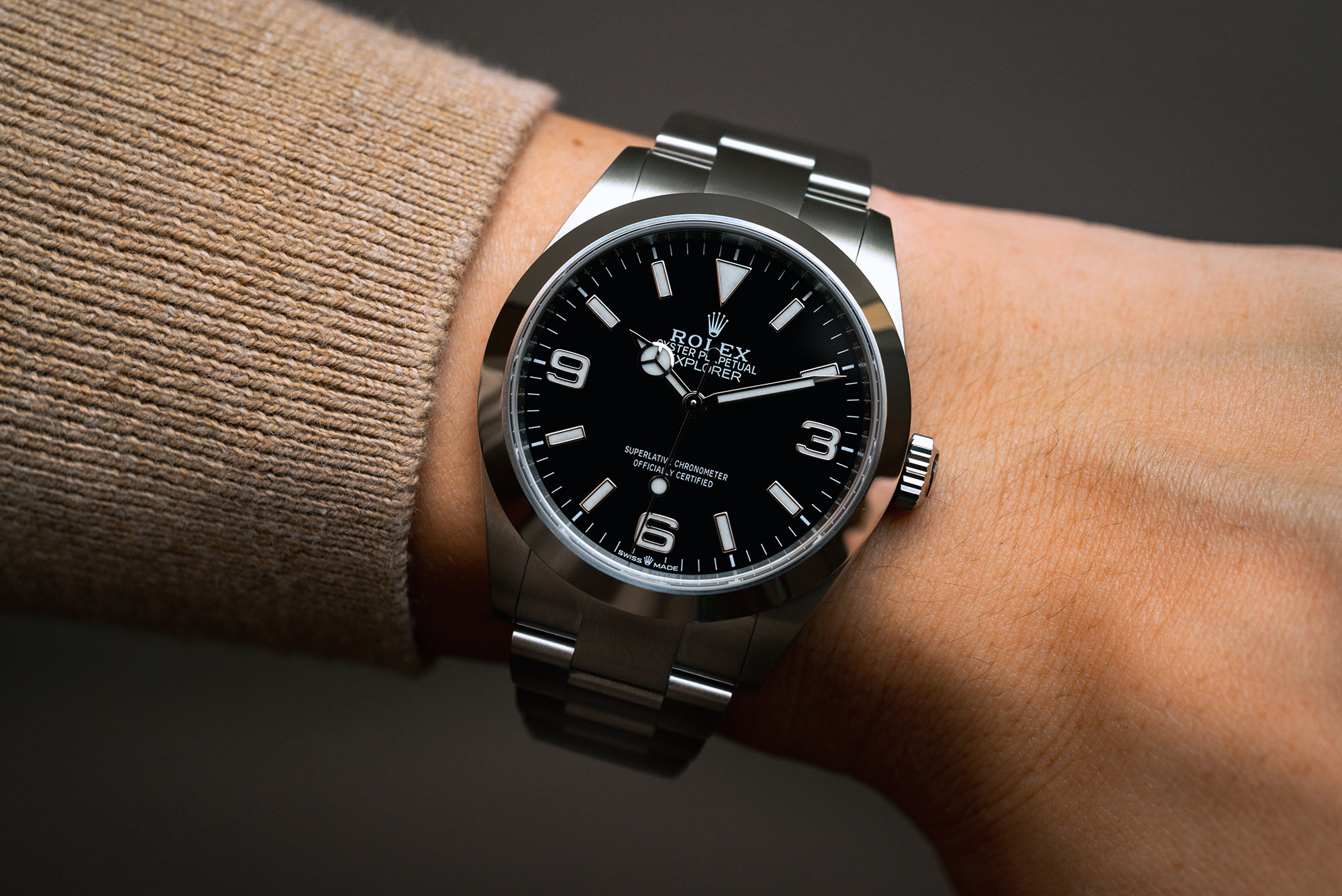
The new Rolex Explorer 40 reference 224270 is accompanied by an official retail price of $7,700 USD, which is objectively rather expensive for a time-only stainless steel sports watch; however, this also seems fairly reasonable compared to today’s gray market Rolex prices. While the actual price premium of the new Explorer 40 is just $450 compared to its smaller 36mm sibling, a more telling comparison is what this same sum could have purchased from Rolex just a handful of years ago. The previous 39mm Explorer cost $6,550 several years back, and the no-date Submariner, which is a more advanced model with three times the depth rating and a ceramic bezel, was priced at $7,500. The Explorer has always been the most simple no-frills option among Rolex’s sports watches, although its current pricing makes it very much a luxury item, despite still offering much of the same core design. That said, if you separate the watch from its monetary value, the Rolex Explorer is still the same highly versatile timepiece that pairs classic utilitarian elegance with a proven history of durability. For more information on the Rolex Explorer 40 reference 224270, please visit the brand’s website.

